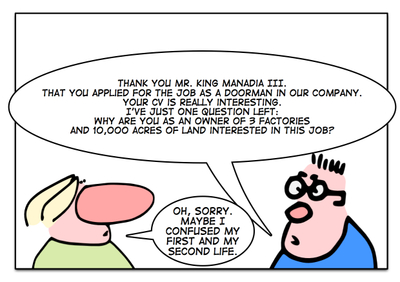Here are the key recommendations of the summit for engaging consumers through social networks. I believe these can be applied to online environment in general:
1. “Let go” and invite users to help shape the brand
2. Grant consumers control over how and when the interact with the brand
3. Deliver content that is relevant, interesting and entertaining. Consumers do not
differentiate between marketing and entertainment
4. Do not interact only to push your product or build your brand
5. Avoid intrusion. Consumers must decide if they want to interact with the brand
6. Be transparent. Admit weakness. Be honest.
Consumers are creative individuals, they want to express themselves, and be engaged. As one of the participants of the summit noted - most successful campaigns in the recent years have included consumers. He pointed to Dove as an example of successful online marketing. So, I decided to take a look at what they’re doing..
Dove recently launched an online channel which is meant to create a unified worldwide experience for their customers, enable the building of an online community and provide a personalized experience for each individual visitor. Visitors are encouraged to participate in ongoing discussion on real beauty, which reinforces their general marketing efforts.
One of the most interesting features of the channel are the Reality Diaries – four blogs written by ordinary teenage girls, covering their everyday experiences which are meant to engage young audience.
Dove’s well known “Evolution” video is also used to encourage people to participate in the debate around the beauty stereotypes. This video was posted on YouTube by fans and viewed over 8 million times. It triggered both online and offline conversations. It also triggered response in shape of parody videos such as “Slob evolution” and “Bush evolution”, which could be considered a downside; however, it is a way in which consumers interact with the brand.
4. Do not interact only to push your product or build your brand
5. Avoid intrusion. Consumers must decide if they want to interact with the brand
6. Be transparent. Admit weakness. Be honest.
Consumers are creative individuals, they want to express themselves, and be engaged. As one of the participants of the summit noted - most successful campaigns in the recent years have included consumers. He pointed to Dove as an example of successful online marketing. So, I decided to take a look at what they’re doing..
Dove recently launched an online channel which is meant to create a unified worldwide experience for their customers, enable the building of an online community and provide a personalized experience for each individual visitor. Visitors are encouraged to participate in ongoing discussion on real beauty, which reinforces their general marketing efforts.
One of the most interesting features of the channel are the Reality Diaries – four blogs written by ordinary teenage girls, covering their everyday experiences which are meant to engage young audience.
Dove’s well known “Evolution” video is also used to encourage people to participate in the debate around the beauty stereotypes. This video was posted on YouTube by fans and viewed over 8 million times. It triggered both online and offline conversations. It also triggered response in shape of parody videos such as “Slob evolution” and “Bush evolution”, which could be considered a downside; however, it is a way in which consumers interact with the brand.

All those efforts serve as a way to build the brand’s relationship with the customers which entails letting go of control and allowing customers to be equal in that relationship. Sometimes the results are opposing views and negative comments, but this is a tool of improving the brand and making it a perfect match to customers’ needs.
Consumers are creators too...


